How to build Starfield outposts and what they do
You'll need a crew, lots of resources, and a planet to build an Outpost in Starfield
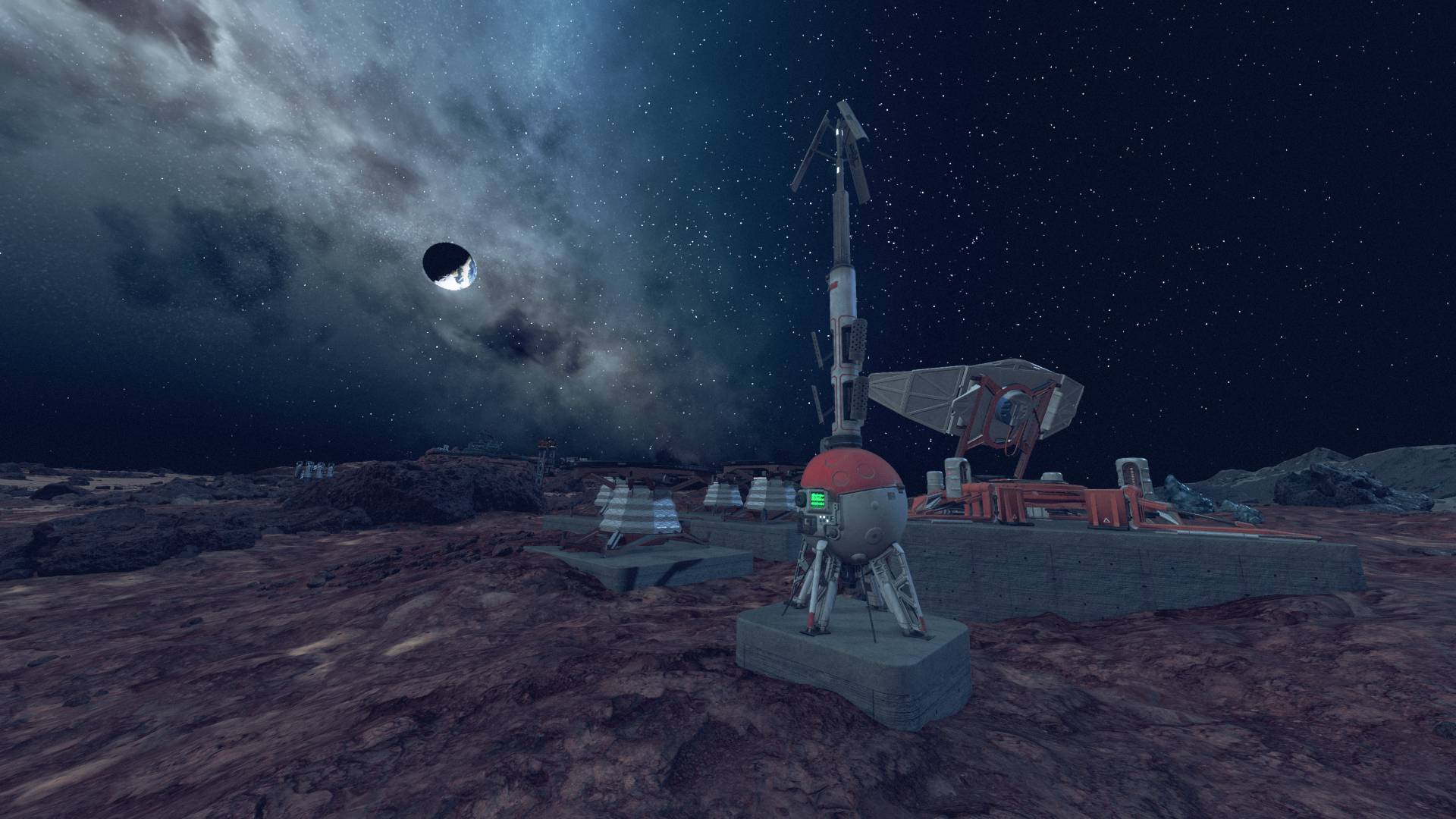
Building Starfield outposts allows you to establish bases for gathering and trading resources all across the Settled Systems. Extracting resources found in a planet's crust is arguably their main purpose, but as you level up certain skills and build particular structures, you can use outposts as landing pads for your ship, station NPC crew members at them to keep things running, craft items, conduct research, and generally live your life in your own corner of the Starfield galaxy. Here are the basics you need to know about constructing outposts in Starfield.
How to build an outpost in Starfield
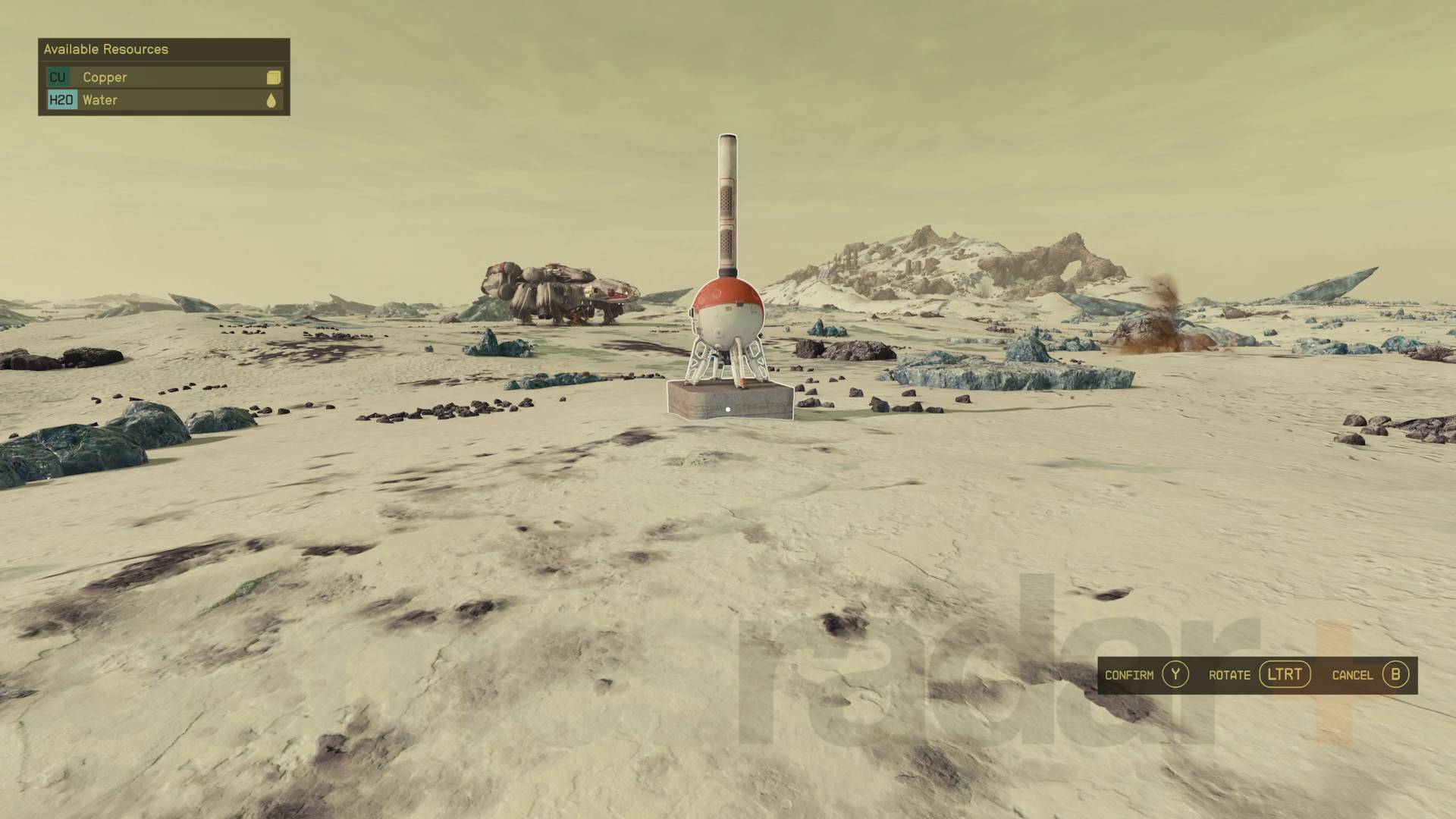
Getting an outpost started in Starfield is actually very simple. Simply head to a planet, open your scanner, and follow the 'Outpost' button prompt at the bottom of the screen (this is X on an Xbox controller). Doing so causes your character to pull out an Outpost Beacon, which you can then place in a suitable location to establish an outpost.
You can interact with this beacon to rename your outpost and enter build/modify mode to add to your outpost – you can do this by following the outpost prompt in your scanner as above. You can even remove the outpost, permanently deleting it and everything within, though all the resources you spent on construction will be fully refunded. In fact, whenever you delete any object in an outpost, the resource cost is refunded.
With a basic outpost established, you can now start placing all sorts of machines and structures to build a proper home, an efficient resource extraction operation, a base of operations for your crew, or some combination of those. Below, I've laid out lots of tips on basic outpost construction in Starfield, as well as some skills you should focus on to up your base building and management capabilities.
Starfield outpost stats
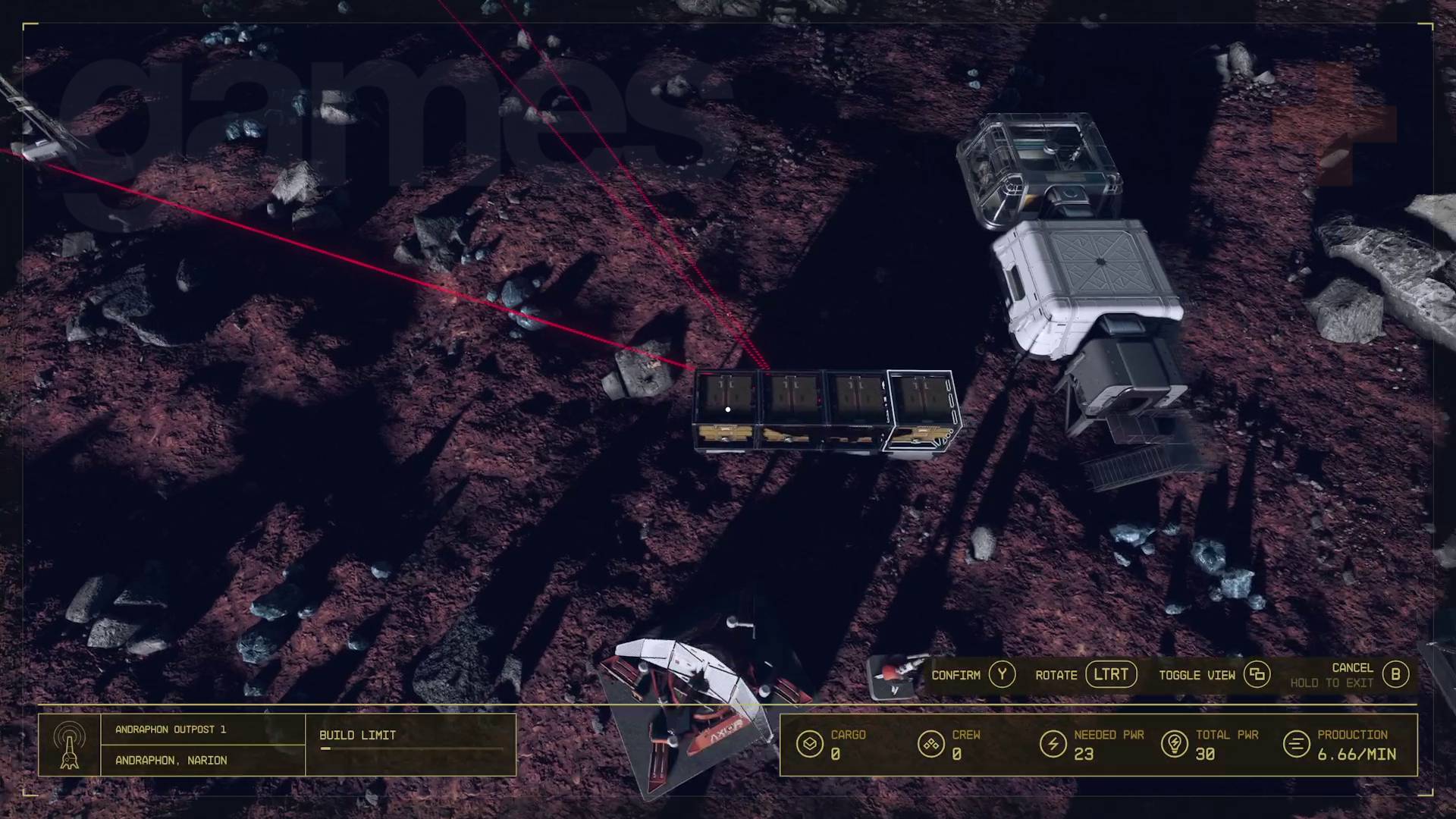
There are a couple of limitations and tips you need to be aware of when building an outpost, so here's some advice to help you set up base in the right place:
- Find an open and reasonably flat area to establish your outpost. Flat ground is much easier to build on, but it also needs to be free of massive trees or rocks as these usually can't be destroyed to make way for your outpost.
- Iron, Aluminium, Copper, and other metals are really important resources for outpost construction. It's important to have a good amount of these metals ready for when you establish your first outpost, but doing so on a planet already rich in these resources means you can extract lots to keep you supplied for future projects.
- Try to build your outposts in spots that feature veins for multiple resources. When picking a spot for your Outpost Beacon, check that the "available resources" box in the top-left corner has at least two different resources listed, as these are the ones you can extract.
- Always make sure you have more than enough Power for your outpost. Keeping everything operating in your outpost means having enough power-generating machinery to ensure your 'Total PWR' exceeds your 'Needed PWR' stat. Needed PWR increases when you add electronics and machines such as extractors, defense turrets, and fabricators, so you need to also build plenty of solar arrays, wind turbines, or fueled generators to meet the Power demand.
- Simply placing power-generating items in your outpost is enough to provide Power. You don't need to link things up with wires and cables.
- Focus your first outpost on basic resource extraction. Don't worry about making it homely, you just need some extractors, power generation, and storage to get started, just like in out Starfield XP farm guide.
- Link a storage container to your extractors, then link other storage containers to the original one. This saves you having to individually link up every extractor to every container.
- To speed up resource extraction, build a bed to pass time.
- Assign crew members to your outpost as soon as possible. You need to build a crew station to do so, but crew members can keep your outpost operational without you having to be there. Make sure you know how to assign crew in Starfield first.
- You can build up to eight Starfield outposts at first. Eight is quite a lot anyway, but the Planetary Habitation skill allows you to build up to 24 for any outpost obsessives.
- You can't build outposts on planets with extreme environments until you've unlocked the Planetary Habitation skill. Although, generally, these planets are pretty rare, especially in the lower-level star systems.
Best Starfield outpost structures
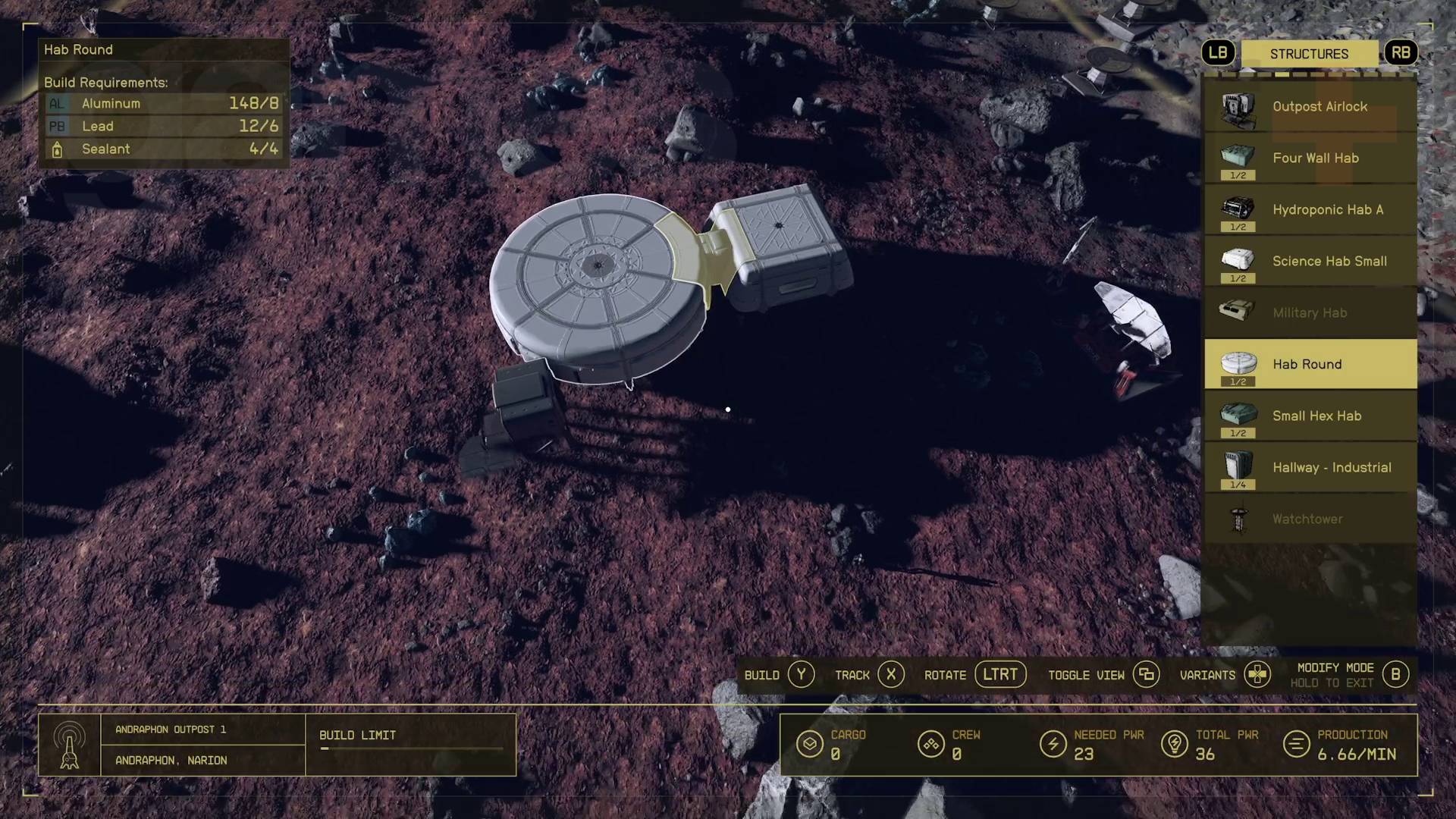
You can build lots of different types of structures, machines, buildings, and decorations for your Starfield outposts, and with so many to choose from, it's hard to know which ones to prioritize. Here are the ones I reckon you should focus on:
- Extractors: As I've mentioned plenty of times already, resource extractors are one of the main draws of outposts and you should build several of them when getting started with a new outpost.
- Solar arrays: These power units are pretty cheap to make and small, so you can place five or six of them to easily have more than enough power for a small outpost.
- Storage: Build storage units to hold whatever your extractors collect in one place.
- Workbenches: You can build any of the six types of workbenches for convenient Starfield crafting and research. Industrial workbenches are especially useful for turning materials into industrial components, but you can also use a fabricator to do this too.
- Inter-System Cargo Link: Build these at your outposts in different systems to transfer resources between them.
- Crew Station: Allows you to station crew members at an outpost. You're capped at three crew stations to begin with, but you can craft more with the Outpost Management skill.
- Landing Pad with Shipbuilder: Lets you land your ship at your outpost rather than nearby and allows you to modify your ship or buy more ships. Make sure you know about the best Starfield ships you can get.
Best skills for building outposts in Starfield
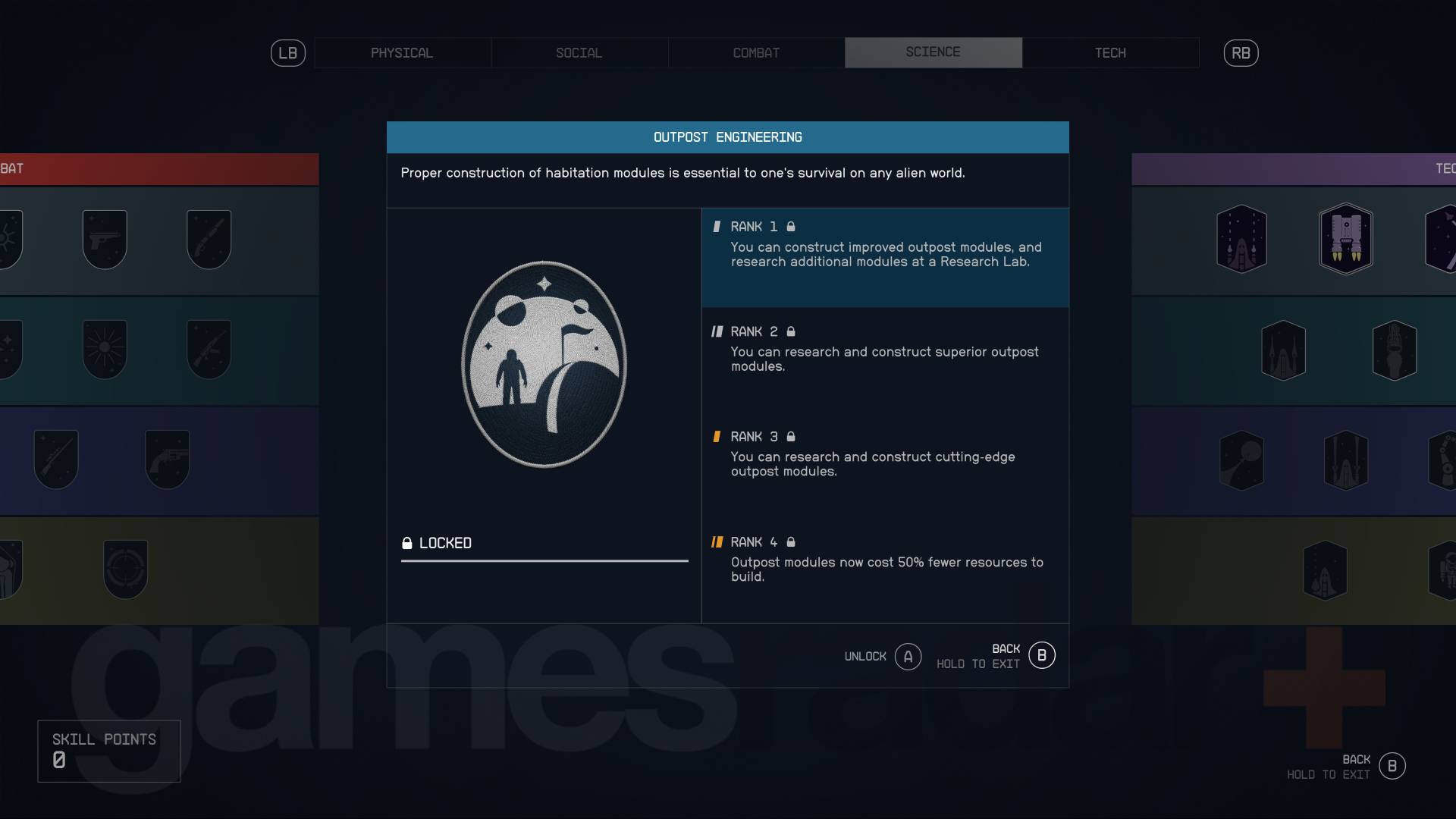
There are several Starfield Skills relevant to outposts, whether it's building them or managing them. If you're serious about building bases around the Settled Systems, here are the skills to focus on:
- Outpost Management (Social): Allows you to add additional cargo links at outposts. At higher ranks you can place add more robots, assign more crew, and increase extraction rates.
- Outpost Engineering (Science): You can construct better outpost modules and unlock research projects for new modules. At higher ranks, you can research and construct superior and cutting-edge modules, and halve the number of resources required to construct a module.
- Planetary Habitation (Science): Allows you to build outposts on planets with Deep Freeze or Inferno temperatures and allow you to build four more outposts for a total of 12. Ranking up the skill unlocks the ability to build outposts on planets with higher pressures, toxic atmospheres, and extreme gravity and further increases your outpost limit by all the way to 24.
- Special Projects (Science): You can research experimental projects at research labs now. At higher ranks, you can craft rare, exotic, and unique manufactured components at industrial workbenches, some of which may help with outpost construction. Furthermore, extractors have a chance to produce additional resources.
© GamesRadar+. Not to be reproduced without permission.
Sign up to the GamesRadar+ Newsletter
Weekly digests, tales from the communities you love, and more

Will Sawyer is a guides writer at GamesRadar+ who works with the rest of the guides team to give readers great information and advice on the best items, how to complete a particular challenge, or where to go in some of the biggest video games. Will joined the GameRadar+ team in August 2021 and has written about service titles, including Fortnite, Destiny 2, and Warzone, as well as some of the biggest releases like Halo Infinite, Elden Ring, and God of War Ragnarok.
- Leon HurleyManaging editor for guides


